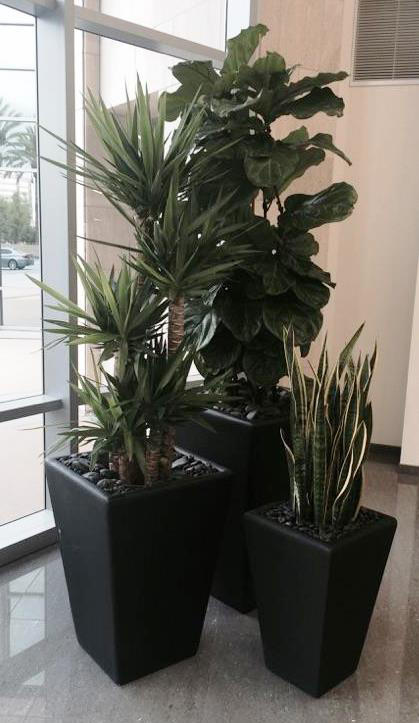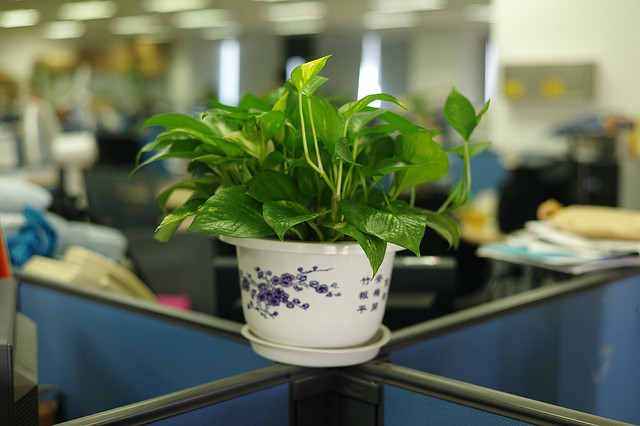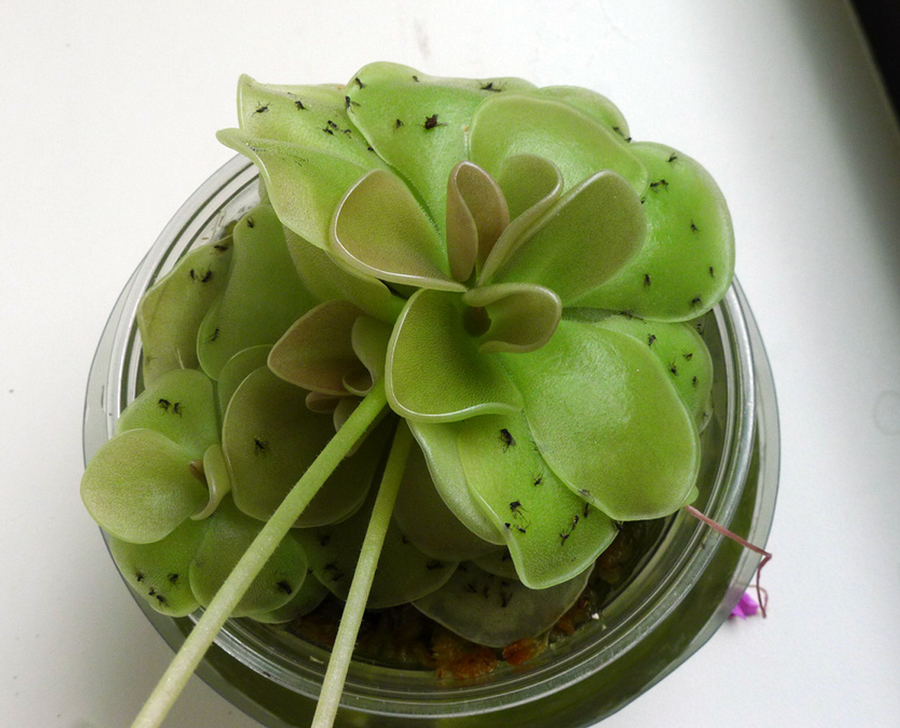We love our endless summer in San Diego, but it’s a nice change to finally feel the first hints of fall’s cooler temperatures. The time change back to standard time isn’t too far off either.
Even San Diegans start spending a lot more time indoors at this time of year. It motivates me to communicate with our clients and you my blog readers about the importance of maintaining a healthy indoor environment when we start spending more time living and working indoors.
You can imagine my reaction when I read this week in the Wall Street Journal about a new study claiming indoor plants could actually be BAD for your health. What? I couldn’t believe it.
A professor in the Crop and Soil Sciences Department at the University of Georgia warned people they could be exposed to gasses from stressed-out houseplants similar to VOCs (volatile organic compounds) when they are overwatered. VOCs are the same nasty toxins emitted by household items like carpets, electronics, and cleaning chemicals. Overwatered plants can also cause fungi and bacteria in the soil to release spores which can cause allergic reactions in some people.
The same professor also warned that if you have too many plants inside your house or office, at night they could produce more carbon dioxide than oxygen and end up competing with you for air. I’m having a very hard time with this claim!
Once I calmed down, the professor also pointed out many houseplants do an excellent job of removing toxic compounds from your indoor air and produce oxygen as well. Oh, NOW you tell me!
The likelihood of anyone having so many plants in their interior spaces that they have to worry about this is close to zero. YOU are much more likely to be a danger to your plants than the other way around. Most of the time, people kill their plants with kindness.
You know the story, maybe you’ve been guilty of this. You bring some nice plants into your interior spaces, or get one as a gift. You make sure they get watered, because you don’t want them to die.
All that tender care including watering your house plants is causing big problems. If the soil of your houseplants is consistently damp, creatures that love living in warm, damp spots will find you and move in.
How do you know if you’re guilty of doing this? If you’ve suddenly had annoying little black things flying around and getting in your face, raise your hand. These are fungus gnats!
Fungus gnats look like tiny mosquitos, but they are not related and they don’t bite. They are found in damp areas, including wet plant soil. Fungus gnats lay their eggs in moist soil. Their larvae are only one-hundreds of an inch long and nearly impossible to see, until they grow into adult gnats and fly out of the plant soil into your face. They feed on plant roots, leaves on the soil, and decaying plant materials. They are grown in about 10 days. They will reproduce year round indoors.
I know this is a big problem. One of the single most popular blog posts on this website of all time is our tips about dealing with fungus gnats. I wrote it after an interior designer asked me how to deal with them. If you missed it, you can read it here.
So don’t kill your plants with kindness. Overwatering is the number one problem. Too much water is even worse than too little. Overwatered plants develop decaying roots because they can’t “breathe.” Maybe you think you need to water because your plant has wilted leaves. Yes, sometimes this means your plant needs water – but it more often means your plant is drowning!
Here’s how to check for sure. Slide your plant out of the pot. All the roots should be nice and firm, solid and a white or light cream color. Decaying roots will be mushy and may have a bad odor.
Second, don’t over fertilize. You don’t need to add plant food every time you water. Especially now as we approach winter, it’s time for your plants to go dormant, rest from their warm season growth period, and get ready when spring returns. As our days grow shorter, there is less light for growth. Your plants may not grow at all for the next few months. That’s OK.
Third, put your plant in the right sized pot for it. You may love having a big house, but your plants don’t like it. When you put a little plant in a big pot, it won’t absorb all the moisture in the large amount of soil around it, and it will rot. An inch or two around the general root area is more than enough.

Interior plants like these installed and maintained by Good Earth Plant Company at HLI in San Diego can improve the performance of your employees.
If you struggle to keep from loving your plants too much, especially if someone stuck you with this job at work, consider bringing in an interior plant service company like Good Earth Plants. Forgive me for sounding like a sales pitch, but our horticultural technicians take great care not to let conditions get to the point where plant roots are rotting and letting fungus gnats can breed easily. Then you can put your mad skills to work where the boss will appreciate and reward them!


